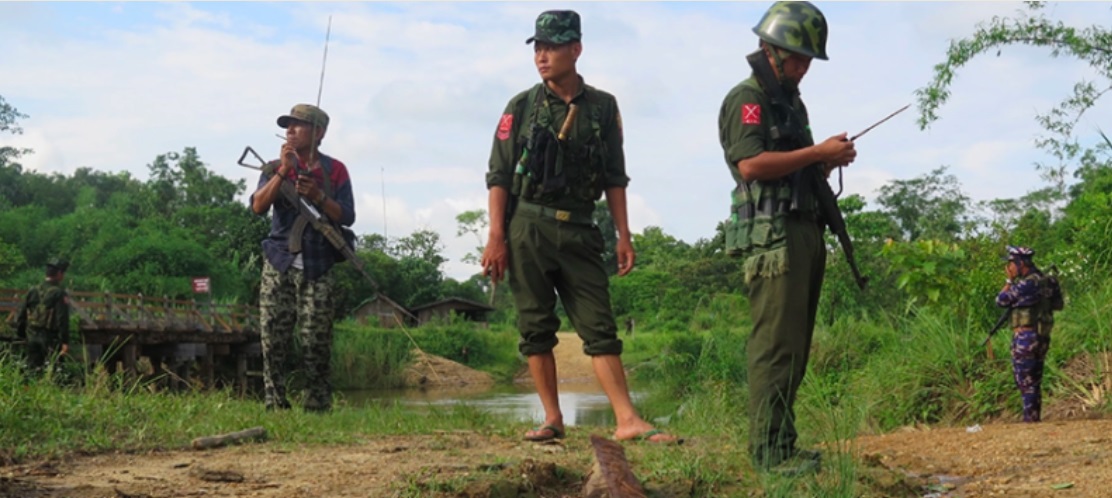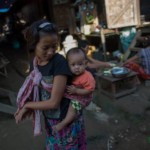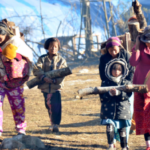By Lawi Weng / The Irrawaddy | December 14, 2017
The Myanmar Army on Wednesday shelled at least four positions held by the Kachin Independence Army in northern parts of the country in a move rebel leaders are interpreting as a signal that fighting will soon escalate in areas under their control.
Col. Naw Bu, a KIA spokesperson, told The Irrawaddy today that the four places were in Laiza, Mansi and Tanai townships. “Looking at their shelling, we understand that they are preparing to do something to us,” he said, suggesting a military escalation was imminent.
Col. Naw Bu said the Myanmar Army fired three artillery shells at a forward security post for a KIA base in Mung Lai Hkyet at 2 pm local time, adding there had been “no fighting in the area on previous days.”
Clashes have also broken out around Tanai township where the Myanmar Army has blocked public roads out of the town. The army has also shelled nearby mining villages and dropped leaflets from helicopters ordering people to move out of these areas before May.
“They block all the roads. No one dares travel back to their villages. They have even shelled amber mining areas,” said Yui Che Le, a member of the Kachin Baptist Convention in Tanai township, which provides help to Kachin IDPs.
In its account of the hostilities, the Ministry of Defence said there had been landmine incidents on an almost daily basis around Kachin state with a dozen people being wounded by devices it said were planted by the KIA. The ministry said there had been landmine explosions in at least five places: Bhamo, Karmine, Hpakant, Mohnyin and Tanai townships.
The Myanmar Army had had taken people wounded by the landmine blasts to hospital for treatment and has posted photos of the victims on the Ministry of Defence’s Facebook account to support its version of events.
As for three small blasts in Hpakant yesterday, Col. Naw Bu denied army charges that the shells came from the KIA. “The Tatmadaw (Myanmar Army) said the bombs were from us. But, we stand by our accusation that the bombs were from them. There are Tatmadaw, KIA, and even Red Shan militia based in the areas,” he said.
Military Offensive
The Burmese Army typically launches its military offensives against rebels groups in October with the onset of the dry season in Kachin and northern Shan states, but their offensive started late this year. Some observers believe the Army is seeking to keep a lower profile after coming under intense pressure from the international community after it launched a sweep in Rakhine state in August that forced more than 620,000 Rohingya to flee to Bangladesh. As a result, they have delayed their annual military offensive in Kachin and northern Shan states.
The Myanmar Army launched a heavy offensive last year at about this time in Kachin state and northern Shan. Claiming they had no place to hide in the jungle, the rebels launched a counter offensive, attacking army bases in a number of places in northern Shan state including Muse, Kutkai, and Mongko townships and forcing hundreds of IDPs to flee to China.
Kachin State is rich in of natural resources and the Myanmar Army has a keen interest in grabbing control of these areas, according to the rebels. Earlier this year, an army lawmaker in the Lower House proposed the army be given approval to launch military operations to take over mining areas. But, Parliament rejected the proposal. Also, a military MP in Kachin asked the state Parliament to authorize curfews in some parts of the state, but the state parliament voted that plan down too.
Many Hpakant jade mining areas are already under the control of the army, while mining areas in Tanai are controlled by the KIA.
Refugee Situation in Kachin
The Myanmar Army has not allowed humanitarian agencies from the UN to deliver aid to Kachin IDPs. UN officers reported that they have asked the Myanmar Army several times for permission but they have not been denied on each occasion.
Local Kachin rights activists and international rights groups have called the blocking of humanitarian aid deliveries to the IDPs a war crime, but the army has ignored the criticism. It apparently believes the KIA will able to resist a long offensive if it lets international humanitarian aid cross into KIA-controlled areas. The Myanmar Army has deployed a “four cuts” counter-insurgency strategy that aims to cut off food, funds, intelligence and popular support for the KIA’s armed resistance.
A 17-year-long ceasefire between the KIA and Myanmar Army broke down in 2011. The resulting fighting has caused 120,000 people to flee from their homes and they are now living in 167 IDP camps in Kachin State. They have not been able to go back home since the fighting erupted.
This article originally appeared on The Irrawaddy on December 14, 2017.







